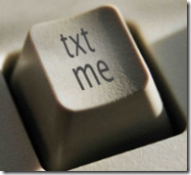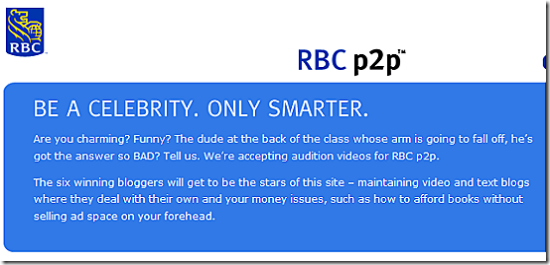As a one-time bill payment product manager, I've long appreciated the difficulties of making online payments live up to the hype. It was one of online banking's "dirty secrets" in the 1990s that if you wanted your bill paid quickly, you'd usually be better off whipping out your checkbook and dropping the "ink on dead trees" into the so-called snail mail (see note 1).
Thankfully, those days are behind us. Thanks to CheckFree, Metavante, Online Resources, MasterCard RPPS, and smaller companies such as iPay Technologies, Billeo Inc., Princeton eCom (now owned by Online Resources), and Yodlee, we have reached the point where most bill payment transactions are fully electronic from consumer initiation to posting by the biller. The paper has finally been wrung from the system, at least on the remittance side. There's still some work to be done on the actual billing statement itself.

Luckily, we have six of these payment innovators appearing at our upcoming FINOVATE 2007 conference to be held in NYC on Oct. 2, although Yodlee will be showing its online personal finance manager and Online Resources will be DEMOing its virtual collection technology. If you are interested in attending the conference, please register now, since there are only 37 seats remaining. Here's the link.
Billeo Inc.
 Billeo is an outside-the-box-thinking online payments facilitator that uses the power of Web-based tools to make it easier for consumers to track and manage all their payments, both at the point-of-sale, and one-time and recurring bills. Blue-chip clients include Visa and Target among others. The
Billeo is an outside-the-box-thinking online payments facilitator that uses the power of Web-based tools to make it easier for consumers to track and manage all their payments, both at the point-of-sale, and one-time and recurring bills. Blue-chip clients include Visa and Target among others. The  Santa Clara, CA-based company won an OBR Best of the Web in 2005 for its toolbar-based interface. The venture-backed company's innovative streak lands it on the pages of NetBanker quite frequently (see previous coverage here) and we look forward to seeing the next generation of its service at FINOVATE in three weeks.
Santa Clara, CA-based company won an OBR Best of the Web in 2005 for its toolbar-based interface. The venture-backed company's innovative streak lands it on the pages of NetBanker quite frequently (see previous coverage here) and we look forward to seeing the next generation of its service at FINOVATE in three weeks.
CheckFree
 CheckFree literally created the market for online bill payment in the United States and has worked tirelessly to help convert what was once a large paper-pushing operation into a finely tuned, almost totally electronic, process. They've been the leader not only in creating a smooth back-office system, but also in smoothing out the rough edges in the payee sign-up process, in the customer interface, and in moving billers towards bill presentment. CheckFree, which closed on its acquisition of platform-provider Corillian just a few months ago, has been swept up by Fiserv in a proposed acquisition pending shareholder approval. Every year the company raises the bar for online bill payments, and I look forward to seeing what they have in store for FINOVATE attendees.
CheckFree literally created the market for online bill payment in the United States and has worked tirelessly to help convert what was once a large paper-pushing operation into a finely tuned, almost totally electronic, process. They've been the leader not only in creating a smooth back-office system, but also in smoothing out the rough edges in the payee sign-up process, in the customer interface, and in moving billers towards bill presentment. CheckFree, which closed on its acquisition of platform-provider Corillian just a few months ago, has been swept up by Fiserv in a proposed acquisition pending shareholder approval. Every year the company raises the bar for online bill payments, and I look forward to seeing what they have in store for FINOVATE attendees.
iPay Technologies
 We've written about iPay Technologies in Online Banking Report a number of times, but unless you've shopped bill payment providers in the past few years, you may not be familiar with the nimble Elizabethtown, Kentucky-based firm. The privately held, 250-person bill payment specialist now handles payments for more than 1,000 banks and credit unions with a total user base just under 500,000. The company is a full-service provider offering not only bill payments, but also person-to-person payments, interbank transfers, gift-oriented payments, and even old-school telephone bill payment. If you haven't met the management team of iPay yet, you are in for a treat. Dana Bowers and her team are a delight, and I encourage everyone to talk to them during the FINOVATE breakout session.
We've written about iPay Technologies in Online Banking Report a number of times, but unless you've shopped bill payment providers in the past few years, you may not be familiar with the nimble Elizabethtown, Kentucky-based firm. The privately held, 250-person bill payment specialist now handles payments for more than 1,000 banks and credit unions with a total user base just under 500,000. The company is a full-service provider offering not only bill payments, but also person-to-person payments, interbank transfers, gift-oriented payments, and even old-school telephone bill payment. If you haven't met the management team of iPay yet, you are in for a treat. Dana Bowers and her team are a delight, and I encourage everyone to talk to them during the FINOVATE breakout session.
Metavante
 Metavante, wholly owned by Marshall & Ilsley, but on a path to be spun out later this year, is involved in almost every aspect of banking from risk management to loan originations and of course payments and online banking. The company's Products and Services page lists 78 items. I've had the opportunity to participate in its user conference the past three years, and it's mind-boggling to see the breadth and depth of its products displayed in one event. Its latest is a joint venture with leading UK-based mobile-provider Monitise, another FINOVATE presenter (press release here). On Oct. 2, Metavante will be demonstrating its Immediate Payments service, something that customers have long valued. It will be interesting to see how Metavante delivers on this tricky payment capability.
Metavante, wholly owned by Marshall & Ilsley, but on a path to be spun out later this year, is involved in almost every aspect of banking from risk management to loan originations and of course payments and online banking. The company's Products and Services page lists 78 items. I've had the opportunity to participate in its user conference the past three years, and it's mind-boggling to see the breadth and depth of its products displayed in one event. Its latest is a joint venture with leading UK-based mobile-provider Monitise, another FINOVATE presenter (press release here). On Oct. 2, Metavante will be demonstrating its Immediate Payments service, something that customers have long valued. It will be interesting to see how Metavante delivers on this tricky payment capability.
Note:
1. For those of you new to the bill-payment business, the reason snail mail beat online payments was that prior to the turn of the century, the majority of "online" bill payments were actually sent via snail mail, often from remote locations, that took longer to traverse the country than if the consumer had sent it themselves.
 In all the discussions about mobile banking — will it be text-based, go through a mobile website, or do 225 million U.S. mobile phones all have to download some sort of an app — there is little discussion on an obvious use case, voice to text.
In all the discussions about mobile banking — will it be text-based, go through a mobile website, or do 225 million U.S. mobile phones all have to download some sort of an app — there is little discussion on an obvious use case, voice to text.  While I don't know any banks using this approach, Jott, which is a voice-to-text Web 2.0 company, recently used Zillow's API to offer voice-to-text delivery of home values (see Zillow blog post here). After registering with the sites, users can call J
While I don't know any banks using this approach, Jott, which is a voice-to-text Web 2.0 company, recently used Zillow's API to offer voice-to-text delivery of home values (see Zillow blog post here). After registering with the sites, users can call J ott, say an address, and receive a text message with the estimated home value of the property. While this is not exactly a mainstream app, it's surely valuable for real estate agents, home buyers, and nosy neighbors.
ott, say an address, and receive a text message with the estimated home value of the property. While this is not exactly a mainstream app, it's surely valuable for real estate agents, home buyers, and nosy neighbors. 

























